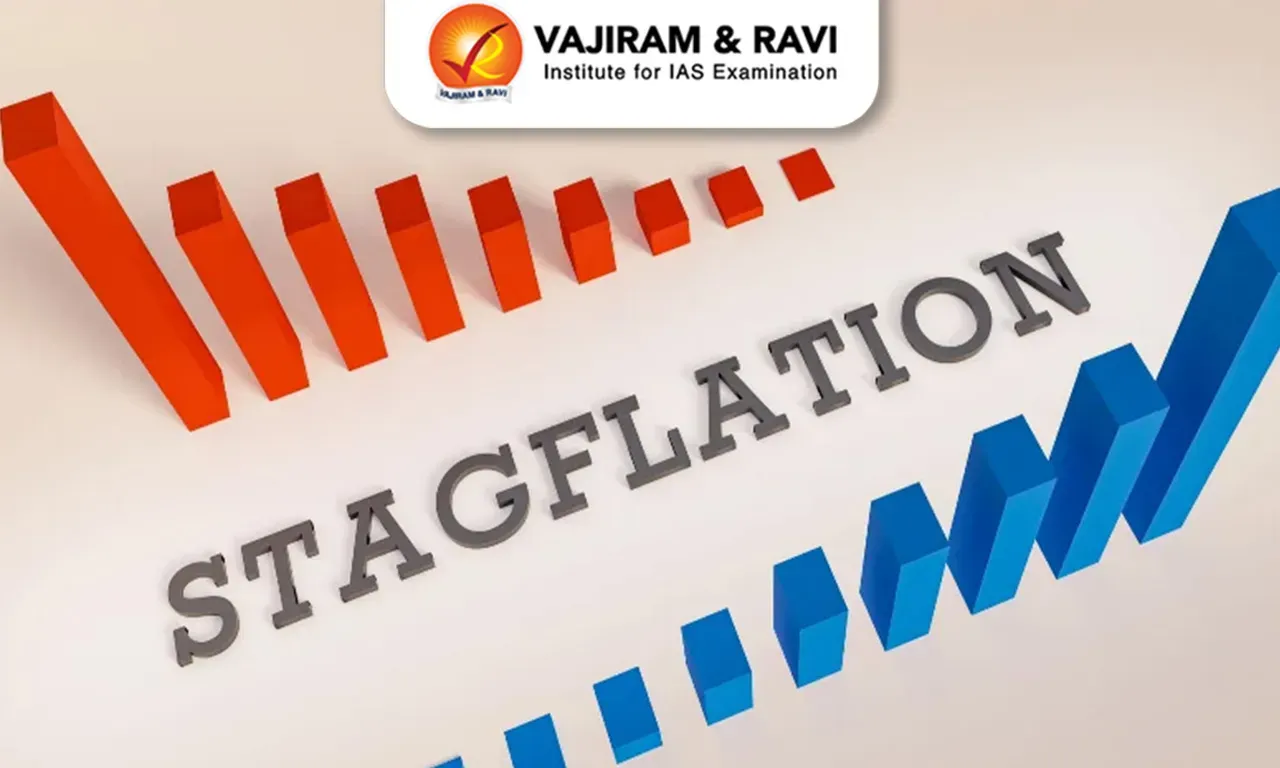Stagflation Latest News
In May 2025, concerns over stagflation have intensified in the United States. Banks are now sitting on $482.4 billion in unrealized losses from securities investments, a 32.5% increase from the previous quarter, according to the Federal Deposit Insurance Corporation (FDIC).
About Stagflation
- Stagflation is an economic phenomenon where an economy experiences three adverse conditions simultaneously:
- High inflation (rising prices)
- Stagnant or slow economic growth
- High unemployment
- The term was first used in the 1960s and became prominent during the 1970s oil crisis.
- Stagflation is particularly challenging because the usual economic tools to fight inflation or unemployment often worsen the other problem.
- For example, raising interest rates may control inflation but further slow growth and increase joblessness.
- Causes of Stagflation:
- Supply Shocks: Sudden spikes in the cost of essential resources (like oil) increase production costs, leading to both inflation and reduced output.
- Policy Errors: Poorly coordinated fiscal and monetary policies, such as excessive government spending or delayed interest rate hikes, can fuel inflation while failing to stimulate growth.
- Tariff Increases: Recent U.S. tariffs have raised input costs, potentially triggering stagflation by increasing prices and reducing demand.
Impact of Stagflation
- Diminished Purchasing Power: Inflation erodes household incomes, reducing consumption.
- Higher Unemployment: Companies facing higher costs and weaker demand cut jobs.
- Reduced Investment: Economic uncertainty discourages businesses from investing, further hampering growth.
- Financial Sector Stress: High interest rates, necessary to fight inflation, reduce the value of banks’ bond holdings. If depositors lose confidence, banks may face liquidity crises, as seen with SVB in 2023.
Stagflation FAQs
Q1. What is stagflation in an economy?
Ans. Stagflation is when an economy has high inflation, slow growth, and high unemployment at the same time.
Q2. Is stagflation worse than inflation?
Ans. Yes, stagflation is worse than inflation because it combines high prices with slow growth and rising joblessness.
Q3. How do you fix stagflation?
Ans. Stagflation is hard to fix, but solutions include supply-side reforms, targeted fiscal policies, and careful monetary policy.
Q4. What caused the 1970s stagflation?
Ans. The 1970s stagflation was mainly caused by oil price shocks, supply shortages, and policy mistakes.
Source: ET
Last updated on December, 2025
→ Check out the latest UPSC Syllabus 2026 here.
→ Join Vajiram & Ravi’s Interview Guidance Programme for expert help to crack your final UPSC stage.
→ UPSC Mains Result 2025 is now out.
→ UPSC Notification 2026 is scheduled to be released on January 14, 2026.
→ UPSC Calendar 2026 is released on 15th May, 2025.
→ The UPSC Vacancy 2025 were released 1129, out of which 979 were for UPSC CSE and remaining 150 are for UPSC IFoS.
→ UPSC Prelims 2026 will be conducted on 24th May, 2026 & UPSC Mains 2026 will be conducted on 21st August 2026.
→ The UPSC Selection Process is of 3 stages-Prelims, Mains and Interview.
→ UPSC Result 2024 is released with latest UPSC Marksheet 2024. Check Now!
→ UPSC Prelims Result 2025 is out now for the CSE held on 25 May 2025.
→ UPSC Toppers List 2024 is released now. Shakti Dubey is UPSC AIR 1 2024 Topper.
→ UPSC Prelims Question Paper 2025 and Unofficial Prelims Answer Key 2025 are available now.
→ UPSC Mains Question Paper 2025 is out for Essay, GS 1, 2, 3 & GS 4.
→ UPSC Mains Indian Language Question Paper 2025 is now out.
→ UPSC Mains Optional Question Paper 2025 is now out.
→ Also check Best IAS Coaching in Delhi
Tags: prelims pointers Stagflation upsc prelims current affairs

















